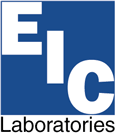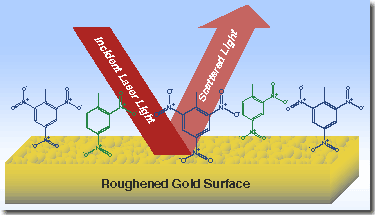

EIC Laboratories provides research, development and prototyping of spectroscopic systems and analytical instrumentation for a range of applications, including chemical and biological sensing, materials identification and analysis, industrial process control, and environmental monitoring. EIC's capabilities extend to a broad range of spectroscopic and analytical systems, including instrumentation design and development for Raman spectroscopy, fluorescence, imaging, absorption, optical limiting, detection in microsystems and measurement of high optical densities.
Instrumentation Development and Applications of Raman Spectroscopy123
The Raman systems group develops Raman instruments and methods to solve real-world problems. Our innovative Raman solutions include compact high resolution echelle spectrographs, field portable Raman systems for on-site analysis, high performance ultraviolet Raman spectrographs for resonance Raman, and Raman optical activity spectrometers. EIC has as also developed a range of fiber optic sampling techniques and accessories for easily obtaining spectra remotely from the spectrograph. Applications of these instruments have included on-site identification of unknown chemicals, down-hole location of chlorinated solvents in soils, in situ corrosion detection and analysis, and monitoring of radioactive tank wastes.
![]() Detection of Dense Nonaqueous Phase Liquids (DNAPLs) with Raman Spectroscopy
Detection of Dense Nonaqueous Phase Liquids (DNAPLs) with Raman Spectroscopy
![]() In-situ Monitoring of Nuclear Waste
In-situ Monitoring of Nuclear Waste
![]() A Raman Fiber Optic Probe to Monitor Hydrothermal Oxidation Processes
A Raman Fiber Optic Probe to Monitor Hydrothermal Oxidation Processes
![]() High Resolution, Full Range UV Raman Spectrograph
High Resolution, Full Range UV Raman Spectrograph
Surface-Enhanced Raman Spectroscopy
 For many applications, lack of sensitivity has been a major obstacle for Raman spectroscopy. The ability to detect and identify potentially harmful materials at low concentrations has risen to the forefront of research and development efforts. EIC Laboratories has been employing surface enhanced Raman spectroscopy (SERS) to improve detection limits by a factor of 1012 - 1014. In SERS, an analyte is adsorbed onto a SERS-active surface, normally silver, copper, or gold. The excitation laser is selected to be in resonance with the surface absorption band, or surface plasmon associated with the metal surface. The analyte that adsorbs in the interaction region is perturbed, leading to enhanced spectral features. Since SERS is a direct measure of the analyte's bonding structure, unique spectral signatures are collected and false positives are minimized. SERS techniques have permitted trace level detection and identification of pollutants such as cyanide and pesticides in water supplies. EIC was among the first to use SERS for vapor detection, for example to detect the explosives signatures of buried landmines.
For many applications, lack of sensitivity has been a major obstacle for Raman spectroscopy. The ability to detect and identify potentially harmful materials at low concentrations has risen to the forefront of research and development efforts. EIC Laboratories has been employing surface enhanced Raman spectroscopy (SERS) to improve detection limits by a factor of 1012 - 1014. In SERS, an analyte is adsorbed onto a SERS-active surface, normally silver, copper, or gold. The excitation laser is selected to be in resonance with the surface absorption band, or surface plasmon associated with the metal surface. The analyte that adsorbs in the interaction region is perturbed, leading to enhanced spectral features. Since SERS is a direct measure of the analyte's bonding structure, unique spectral signatures are collected and false positives are minimized. SERS techniques have permitted trace level detection and identification of pollutants such as cyanide and pesticides in water supplies. EIC was among the first to use SERS for vapor detection, for example to detect the explosives signatures of buried landmines.
![]() Buried Landmine Detection with SERS
Buried Landmine Detection with SERS
![]() Detection of Chemical Warfare Agents with SERS
Detection of Chemical Warfare Agents with SERS![]()
home | company | advanced materials | spectroscopy | biotechnology
facilities | affiliates | careers | directions | contact us
All information and images contained in this web site are Copyright © 2004 EIC Laboratories, Inc. All rights reserved.